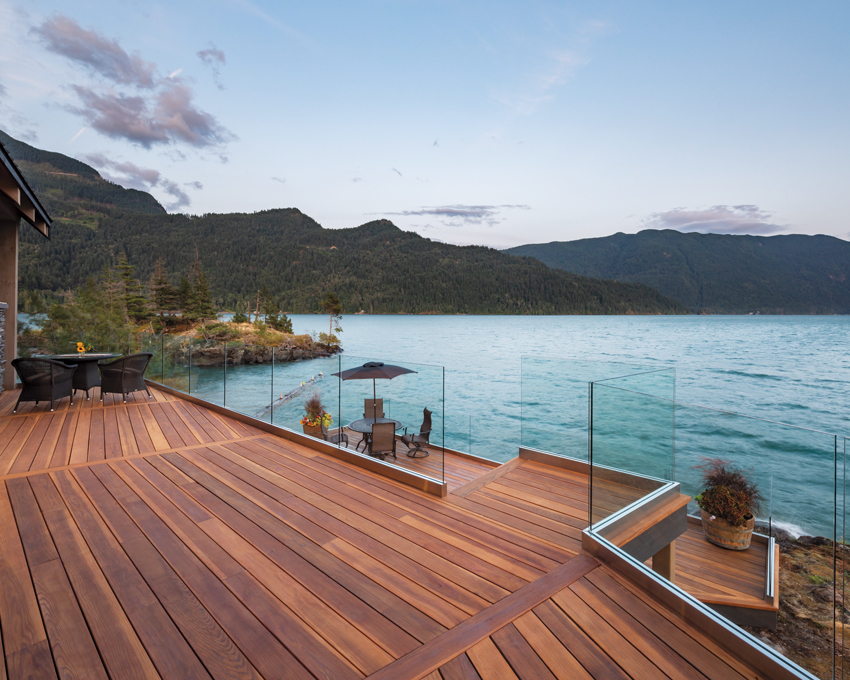Landscape Architecture: Design Ideas for “Taking It Outside”
Learning Objectives:
- Discuss the key results of a new life-cycle assessment (LCA) and related environmental product declarations (EPDs) for redwood lumber.
- Define the key sustainability criteria (LEED v4 BD+C and SITES v2) that apply to exterior materials that are used in landscape architectural design.
- Identify and explain the product compliances that meet LEED v4 BD+C and SITES v2 sustainability criteria.
- Gain technical knowledge about some of the products and systems that are currently available for designing durable outdoor areas.
Credits:
This course is approved as a Structured Course
This course can be self-reported to the AANB, as per their CE Guidelines
Approved for structured learning
Approved for Core Learning
This course can be self-reported to the NLAA
Course may qualify for Learning Hours with NWTAA
Course eligible for OAA Learning Hours
This course is approved as a core course
This course can be self-reported for Learning Units to the Architectural Institute of British Columbia
Landscape architecture by definition is the design of outdoor spaces. The American Society of Landscape Architects (ASLA) provides a detailed explanation in response to the question, “What is landscape architecture?” It states that landscape architects have a significant impact on both the natural environment and the people who live in the surrounding communities. As we adjust our design criteria for meeting COVID-19 recommendations for safe social distancing as well as spending more time outside, there are several options available for landscape architects to create attractive outdoor spaces that allow people to enjoy social interaction outside, both safely and comfortably.

Photo courtesy of Humboldt Sawmill Company
Redwood was used for this multilevel lakefront deck.
During the pandemic of 2020, we experienced social isolation because of various restrictions that limited access to our normal patterns of work, play, and socialization. Yet even during the tightest restrictions, outdoor locations were considered the safest environments for social interaction. Many news articles have pointed out that it took a pandemic to finally force Americans to rethink the way we relate to the outdoors. And as the pandemic restrictions have lifted, many people still feel “safest” interacting and socializing outside.
Post-pandemic, as we look forward to the restoration of healthy socializing and community engagement, designers and landscape architects are presented with more opportunities to provide outdoor spaces that:
- Improve and regenerate environmental conditions;
- Benefit people’s health;
- Enhance safe social interaction; and
- Are sustainable and economically beneficial.
Well-designed outdoor spaces can meet the goals of social distancing while providing comfortable and desirable environments for users to frequent.
In addition to providing ideas for creating outdoor spaces that contribute to the health and welfare of communities, this course will also address ways in which outdoor spaces can meet both LEED and Sustainable SITES guidelines.
Sustainability has expanded its definition and applications beyond material content and safety, material resource resiliency, and design adaptability. The most recent versions of LEED include considerations relating to human health and well-being as well as social and cultural connections. Both LEED for Neighborhood Development (LEED ND) and Sustainable SITES provide performance measures for designing functional and regenerative landscapes that increase outdoor opportunities.
Key design criteria of both SITES and LEED, which focus on sustainability in the design elements for outdoor spaces, include Materials Selection, Environmental Quality, Human Health and Well-Being, and Energy and Optimization. This course will explore the ways that designers can create an attractive and sustainable outdoor environment compliant with these LEED and SITES criteria, while also effectively addressing health and community benefits.
So, how can we create outdoor spaces that provide safe and comfortable outdoor environments while also contributing to environmental sustainability?
Redwood: An Environmentally Friendly, Renewable Resource
Redwood is an aesthetically beautiful wood that is an environmentally friendly, renewable resource. Sourced from Forest Stewardship Council (FSC C013133) certified forests and manufactured with 100 percent natural materials, redwood lumber and timbers are renewable resources that are also nontoxic and safe for children and pets due to their natural preservative properties that make the wood naturally resistant to insects and decay. Redwood lumber and timbers meet environmental concerns through both the FSC certification and the USDA Forest Service Life-Cycle Analysis.
FSC certification indicates that the forest from which the wood is harvested has been environmentally managed. FSC certification ensures that products come from responsibly managed forests that provide social and economic as well as environmental benefits. The FSC U.S. National Standard (v1.0) guides forest management certification in the United States.
Redwood lumber and timbers will count toward credit achievement under both the LEED rating system and the Sustainable SITES initiative based on the following criteria.
The applicable LEED rating criteria include:
- Renewable Resource: Redwood is a sustainable natural wood product.
- Certified Wood: FSC certification indicating that redwood forests are environmentally managed.
- Low Carbon Footprint: Environmental product declarations (EPDs) are available for redwood noting low carbon footprint in the milling and processing of products.
- Heat Island Effect: Redwood forests help to mitigate the heat island effect and the effects of climate change.
The applicable Sustainable SITES rating criteria for redwood include:
- Renewable Resource: Redwood is environmentally managed.
- Materials Selection: Redwood has a positive life-cycle assessment (LCA).
- Environmental Quality: Redwood is an environmentally managed and durable product.
- Energy and Optimization: The processing of redwood is a low-carbon-footprint operation.
- Human Health and Well-Being: Redwood products are used to create attractive outdoor spaces that invite frequent use, thus benefiting human health and well-being.
An LCA has been done by the USDA Forest Service on the manufacturing process of redwood decking from harvesting through to final disposal of the product. This study evaluated material flows, energy use, and cumulative energy consumptions associated with the manufacturing process. The conclusions were that low carbon emissions during the manufacturing process for redwood decking and carbon storage during the service life of a redwood deck are both positive environmental attributes to be considered when selecting a decking product
The LCA measures the total impact that a material has on the environment, taking into consideration the resources used to create it, the pollution created by its production, and the product’s end-of-life impact.
Redwood has an extremely low LCA because it is both renewable and recyclable. Redwood forests are replanted after harvesting so they are renewable, and redwood decking can be recycled at the end of its life cycle. The wood can be repurposed into wood chips or reused on other projects, and the wood has a long service life.
Notice

www.bisonip.com

www.getredwood.com


















